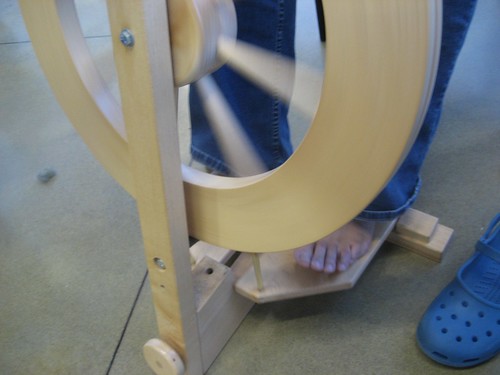Even though I'm a Jewish girl from Brooklyn, I really love the Christmas holiday. I love it for several reasons. Each reason, I hope, offers an alternative to the consumer-frenzy a lot of us find ourselves in this time of year.
NOSTALGIA. My paternal grandparents (not Jewish) were of the "greatest generation" and when I was a kid we celebrated Christmas in style: electric candles in every window, super boozy egg nog in every cup, and Bing Crosby on the crooner radio station that you can only tune in on a stereo cabinet like my grandparents had -- a large, waist-high piece of furniture with a record player under the hood and built-in speakers covered with shimmery golden fabric. A few years back I made a four-song holiday record inspired by those recordings. And this year I learned a few more carols on guitar and played them at gatherings. Fun!
REFLECTION. They say that Christmas is the season of giving and you'll see in the next section that I enjoy that part too. But for me, Christmas is 90% reflection. It's when I take inventory of all that I've done or seen over the year and every year I feel more and more grateful. Sure there have been some real tough times -- my mother's early death, my cancer -- but all in all I live a charmed life. I enjoy this time at the end of the year to really think on that.
MAKING GIFTS. Since I am averse to made-in-China crap, and since I can't afford to buy high-end craft for all of my friends at once (unlike birthdays when you can buy one item at a time), I roll up my sleeves and get to making. In the summer we pick fruit at eco-village and make a ton of jam, so we give that. And then I make truffles, this year two flavors: kahlua and rum (we even made the kahlua). And this year, for the first time, I made felt brooches. About 30 of them. I used a process called needle felting in which you take semi processed wool, called roving, and bind it together with a barbed needle. It's kind of like drawing in slow motion with limited control. I really enjoy it and hope to get better at it over the year, maybe even figure out something to do with it for Maker Faire.
May you have a wonderful holiday season. Don't forget to look at the past. There's a lot to learn there. And try making something with your hands. Even if what you make seems small and not as jazzy as something made in China, it is a large and generous gesture filled with meaning.
































